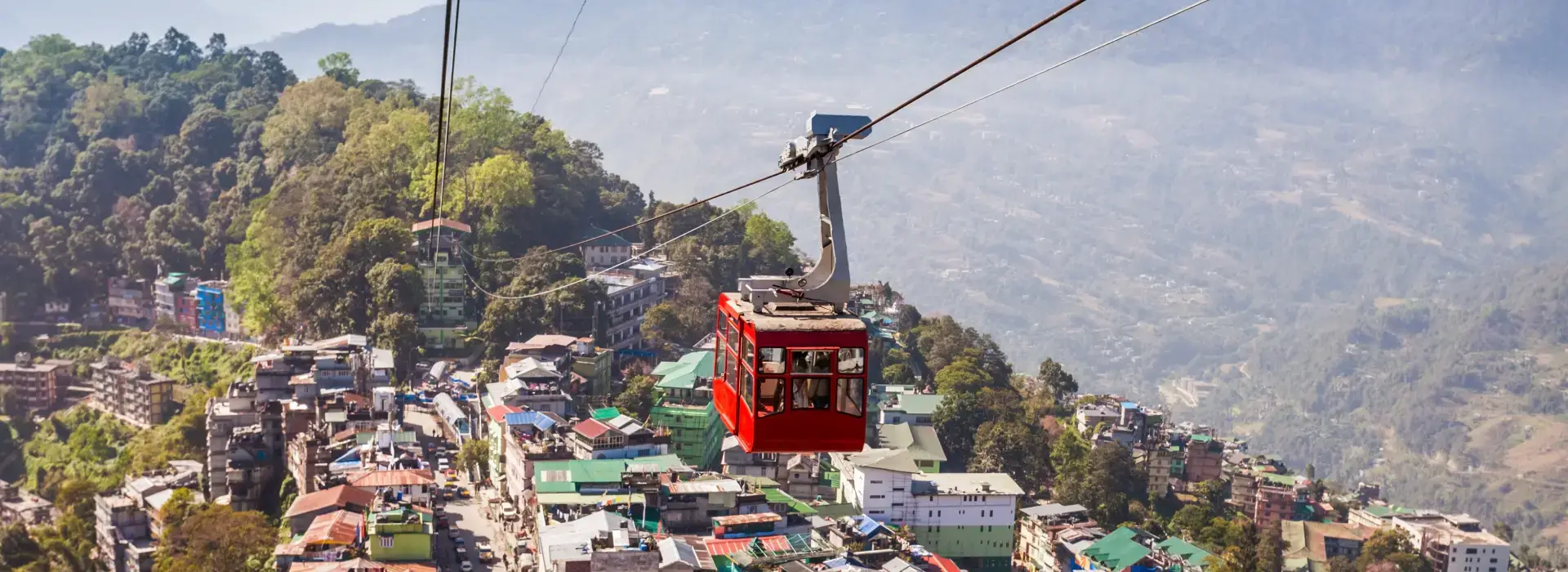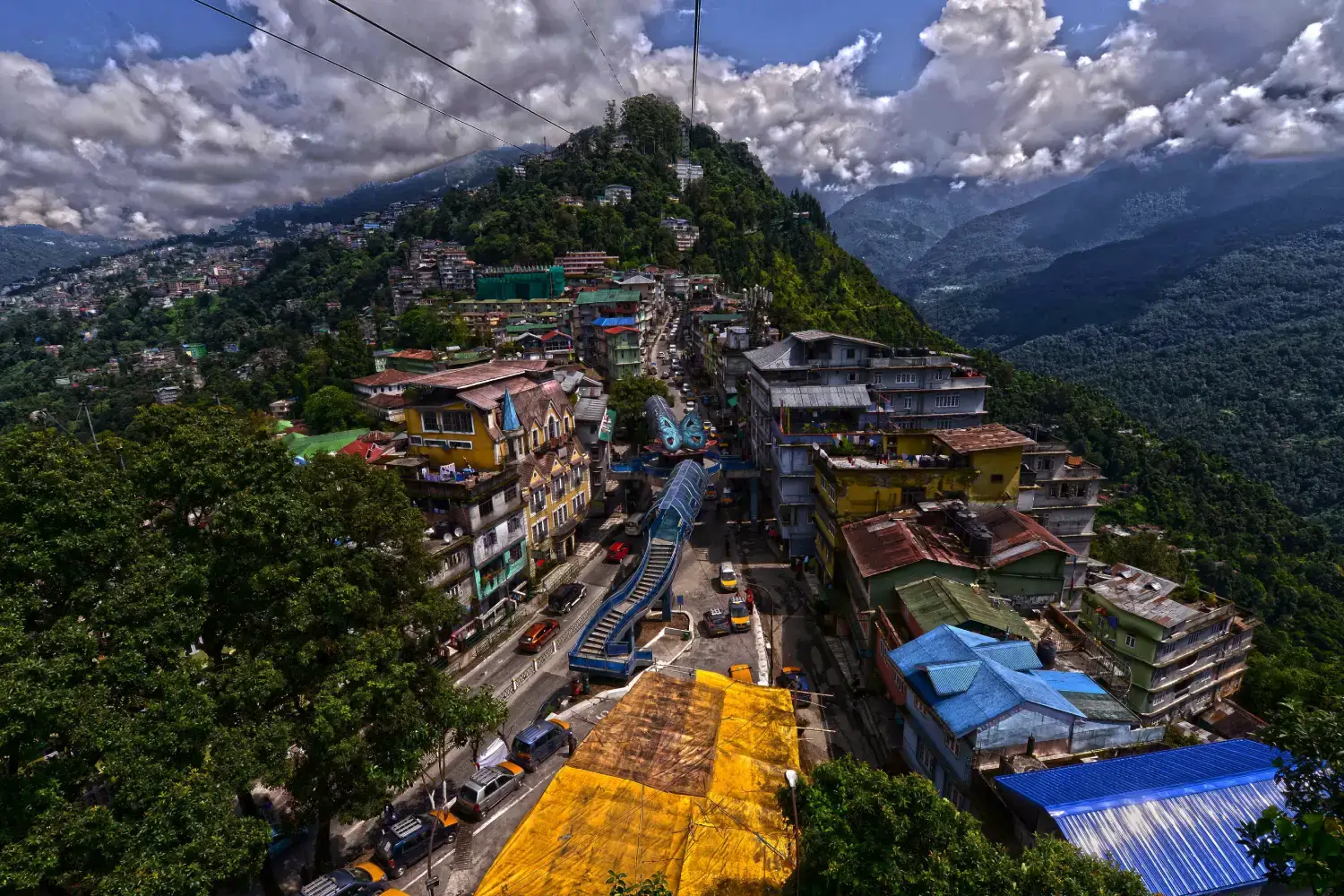 Sikkim Tours Online
Sikkim Tours Online
 Sikkim Tours Online
Sikkim Tours Online

History of Sikkim
The second-smallest state in India, Sikkim borders the Tibet Autonomous Region of China in the north and northeast, Bhutan in the east, Koshi Province of Nepal in the west, and West Bengal in the south. Its strategic location has shaped its rich and dynamic history. Sikkim’s past includes significant battles with neighboring regions, the establishment and rule of the Chogyal-Namgyal dynasty, a period under British influence, and its transition from a protectorate to becoming a fully integrated state of India.
The word Sikkim is derived from the word ‘su him’,meaning a new house. The Lepcha people were the first inhabitants to call Sikkim their home. Later people of Mon, Chand and Naong tribes started inhabiting the area with the Lepcha’s. In the 14th century, the Bhutia tribe also entered Sikkim and the first King of the province was from the Bhutia community as well.
Sikkim’s history can be traced back to the 7th century when it was mentioned in ancient Tibetan texts as a sacred land blessed by Guru Padmasambhava, the revered Buddhist saint who is said to have visited Sikkim during his travels. Padmasambhava is believed to have prophesied the establishment of a Buddhist kingdom in the region.
In 1642, Sikkim witnessed a significant historical event when Phuntsog Namgyal, the first Chogyal (king), was crowned at Yuksom. This marked the beginning of the Namgyal dynasty and the Buddhist monarchy in Sikkim. Phuntsog Namgyal unified the various Lepcha, Bhutia, and Limbu tribes under his rule and established Sikkim’s capital at Yuksom. His reign laid the foundation for a spiritual and political order based on Buddhist traditions.
During the 18th and 19th centuries, Sikkim faced invasions and territorial conflicts with its neighboring kingdoms, including Nepal and Bhutan. In 1835, the British East India Company helped Sikkim regain some of its lost territories from Nepal, leading to a friendly alliance between the British and Sikkimese rulers.
In 1947, after India gained independence, Sikkim became a protectorate under the Indian government, with internal autonomy but limited foreign affairs control. However, political unrest and demands for democratic governance led to the 1975 referendum, after which Sikkim was officially integrated into India as its 22nd state.

Nestled in the eastern Himalayas, is India’s second-smallest state that boasts a rich cultural heritage. Before 2021, the state comprised of 4 districts, namely Gangtok (East Sikkim), Gyalshing (West Sikkim), Mangan (North Sikkim) and Namchi (South Sikkim), however, on 21st December 2021, the Government of Sikkim decided to add two more districts to the state -‘Soreng and Pakyong’.
The six districts are further divided into 16 subdivisions and each district has its own District Magistrate and Sub-Divisional Magistrate.
East Sikkim, home to the capital Gangtok, is a bustling cultural hub, offering panoramic views of the Himalayas and attractions like Tsomgo Lake and Enchey Monastery. It covers about 954 sq. kms land area of Sikkim and also served as a famous pilgrimage site for Buddhists.
One of the first major districts of Sikkim, West Sikkim stands out for its historical significance, with the famous Pemayangtse Monastery and Rabdentse ruins reflecting the region’s royal past. The district is also adorned with many lakes and waterfalls.
Mangan, the largest district in Sikkim, spans an area of 4,226 sq. km and serves as the gateway to North Sikkim’s captivating landscapes. Known for its rugged beauty, the region is home to the breathtaking Yumthang Valley, often called the "Valley of Flowers" for its vibrant rhododendron blooms. The serene Gurudongmar Lake (5428 m), one of the highest lakes in the world, adds to the district’s allure with its pristine waters and spiritual significance.
South Sikkim is known for its spiritual and scenic beauty. Namchi, the district’s main town, houses the famous Char Dham pilgrimage site and the towering Buddha Park. The district also features lush tea gardens, serene monasteries, and offers stunning views of the Himalayas, making it a peaceful and culturally rich destination in Sikkim.
Added as one of the two districts on the 21st December 2021, Soreng is the smallest district of Sikkim with a total land area of just 293.22 sq. kms. This tranquil district is adorned with hills, forests, and tea gardens, and offers views of Mount Kanchenjunga. Soreng is popular for its eco-tourism activities like trekking, bird-watching, and nature walks. It is also home to traditional Lepcha and Bhutia communities.
Pakyong is Sikkim’s newest district and is known for its scenic beauty and cultural heritage. The district houses the Pakyong Airport, Sikkim’s first and only airport. Pakyong also bagged the recognition of being 8th best district out of 75 other districts in India which were selected in the ‘Azadi Se Antyodaya Tak (ASAT)’ inter-ministerial campaign.
Here are quick links to explore the Sikkim Tours Online website and find important information about Sikkim travel, tourism, and holiday packages.